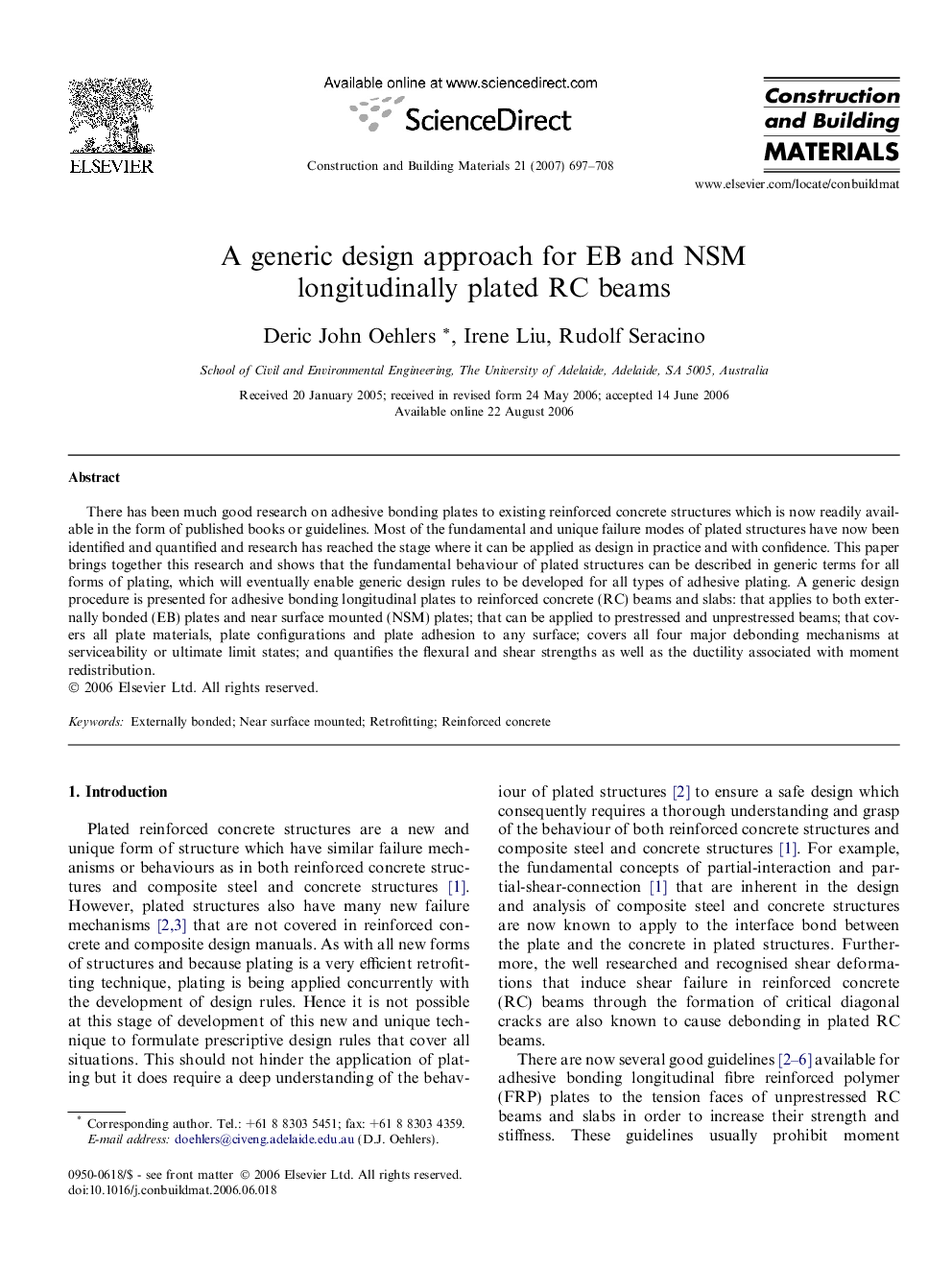| Article ID | Journal | Published Year | Pages | File Type |
|---|---|---|---|---|
| 260796 | Construction and Building Materials | 2007 | 12 Pages |
There has been much good research on adhesive bonding plates to existing reinforced concrete structures which is now readily available in the form of published books or guidelines. Most of the fundamental and unique failure modes of plated structures have now been identified and quantified and research has reached the stage where it can be applied as design in practice and with confidence. This paper brings together this research and shows that the fundamental behaviour of plated structures can be described in generic terms for all forms of plating, which will eventually enable generic design rules to be developed for all types of adhesive plating. A generic design procedure is presented for adhesive bonding longitudinal plates to reinforced concrete (RC) beams and slabs: that applies to both externally bonded (EB) plates and near surface mounted (NSM) plates; that can be applied to prestressed and unprestressed beams; that covers all plate materials, plate configurations and plate adhesion to any surface; covers all four major debonding mechanisms at serviceability or ultimate limit states; and quantifies the flexural and shear strengths as well as the ductility associated with moment redistribution.
